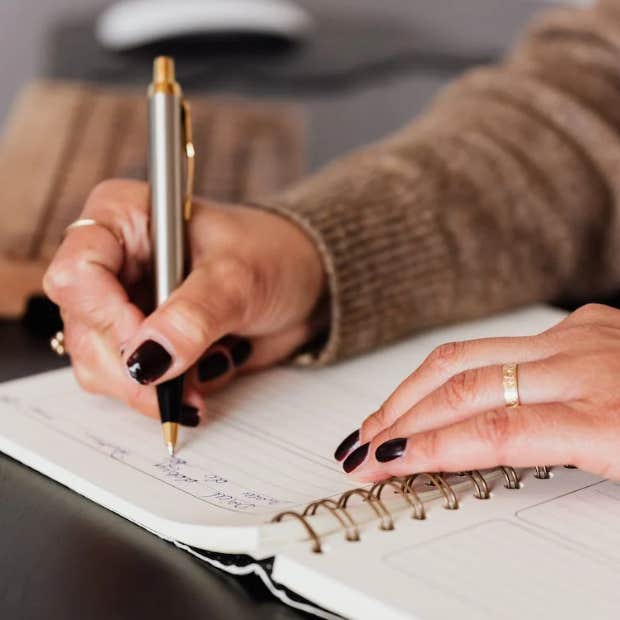Hacking My ADHD
How I combine digital and analog tools in a system that works for me.
 Thought Catalog | Unsplash
Thought Catalog | Unsplash I’ve worked in marketing for seven years, yet I block all ads from my screen. Why? Because I have ADHD, and that stuff is distracting.
Reading is how I process information. Once a headline or a piece of commentary has drawn me in, I’m invested enough to want to know more, but an ad, a blinking GIF, or a suggested video can frustrate my best efforts. Clothing color, facial expressions, jewelry, voice pitch, accents, and more constitute a barrage of sensory input that I struggle to filter out. And no, I don’t dare allow notifications from Slack, Twitter, or anywhere else.
I cannot distinguish what’s important right now from what can be left for later. This is also the reason why I can never estimate how long something has taken, or will take. I say it’s because every project is different — and that’s true — but I also work in fits and starts. For every five minutes spent writing, followed by ten minutes on Twitter, there’s always the chance that I’ll experience an unpredictable epiphany that throws me into a focused 30-minute writing session.
Of course, having no filters means I can’t prioritize easily. A to-do list, even broken down the way the experts recommend, may or may not help depending on whether I broke things down far enough without feeling overwhelmed. There’s a big difference between knowing where the starting point is and feeling able to start — it’s not always as simple as “just pick one thing” when “one thing” feels equally important as 28 other things.

Photo: energepic.com/Pexels
Why faking it only took me so far
For many years, I had no idea that I was neurodivergent — that I had inattentive attention deficit hyperactivity disorder, possibly even some degree of autism. I wasn’t that kid getting up and walking around the classroom. I made good grades and never, ever got into trouble.
This is, however, the norm for many girls with ADHD. Not only are girls socially conditioned to avoid being perceived as “lazy,” ADHD and autism simply present in less outwardly noticeable ways in girls than in boys, so they’re often overlooked by specialists.
In a highly structured school environment that didn’t demand a lot, it was easy to fake my way through. Getting an A on a paper I waited until the last minute to write felt like a badge of honor, not a sign that my brain didn’t work like other kids.
I learned to mask a lot of my issues. To avoid misplacing things, I became very deliberate about “a place for everything, and everything in its place.” So I wouldn’t forget to take something with me, I’d leave it someplace where it would stick out; that way I’d realize it’s out of place and remember why. I’d batch errands, e.g., “Go to the bank on the way to pick up the kid.”
Prioritizing, with my lack of filters, was harder. It took me until well into adulthood to realize that I could color-code tasks to differentiate work projects from personal projects. Until then, everything in one color appeared equally important. Another challenge: relationship management. It might be weeks before I’d realize I hadn’t talked to a potential client or even a friend, which is, well, bad.
It wasn’t until someone close to me was diagnosed with ADHD, and I started researching ways to better support this person, that I started to recognize myself in what I was reading. The descriptions of executive dysfunction were especially eye-opening. For years, I’d thought I was simply defective — a few crossed wires here, a couple of misfires there. Those things may be physiologically true of my brain, but it doesn’t mean they’re “wrong.” They just aren’t neurotypical.
Digital tools: trial and error
Things that are meant to help people organize have never worked for me. One example: For several years I used the Chrome extension OneTab to “organize” all the online reading I wanted to do. However, I’d promptly forget what I had open and move on to 40 new tabs. My OneTab archive ran into the thousands. It was…not pretty.
Meanwhile, paper planner systems ranged from practically a part-time job (Franklin Covey) to woefully inadequate (DayTimer and PlannerPad). Technology seemed to offer a path forward, especially after I made the shift to full-time freelancing. I lived in my email — first Outlook, then Gmail. Gmail was particularly exciting: It offered an entire organizational system of labels, stars (and, later, different icons), and filters.
If, that is, I could remember to use them. It felt clunky. I could never remember which filters I’d set or even to tag things, and most of all, I needed something more visual. Gmail didn’t integrate with Google Calendar or Tasks in the way I needed. I tried Todoist for Gmail, which turns all your emails into tasks, and Workflowy, an endless bulleted outline. Neither helped.
Then a client hired me full-time. At the time, I was the only remote team member in a rapidly growing marketing department, and we needed to figure out how to work together. When my colleague discovered Asana, I fell in love: Not only did it let us tag things and organize them by project and deadline, but it also allowed us to cross-reference tags that were relevant to more than one project. I finally learned to track projects according to a work-back plan, setting dates far in advance, which was revelatory.
My next role was also remote, but the new team didn’t use Asana, and it would’ve been moot in any case — my role covered a different product entirely. Because the development team lived in Jira, the product manager and I tried that tool for marketing assignments, but it didn’t quite work for our purposes. We switched to Trello, whose cards were visually appealing because they segmented projects more deliberately.
It wasn’t the panacea I’d been looking for. Rather than give up, though, I eventually reached the understanding that what I needed was a system of combined digital and analog tools.
How combining digital and analog works for me
My first shift toward discovering better work methods lay in Workona, a Google Chrome extension that lets me separate all my open tabs by project. I can save tabs as references, so I don’t have to keep them all open at once, and I can switch around workspaces/projects as needed. Bliss!
Relationship management has been tougher. I manage several contacts across multiple projects, but systems like Salesforce are overkill for my purposes. Enter Streak for Gmail, a customer relationship management system that helps me visually track multiple contacts across the stages of a business deal or a project. The follow-up reminders I can set for myself track into Google Calendar, where I can also integrate my Trello calendars.
Yet none of it would work well on its own without my analog bullet journal. Something about digital-only tools still feels ephemeral, like I’d miss something significant if I relied on them. Putting pen to paper effectively taps the brakes on my brain so that I can process things with more perspective.

Photo: Karolina Grabowska/Pexels
So I enter the disparate deadlines, events, and appointments across my Google Calendars and Facebook Events into my monthly and weekly planning pages, together with my color-coded task lists. While I’ve given up time tracking in favor of simply getting stuff done by its due date, keeping everything in one spot makes it easier to understand how an appointment or a weekend family event might affect professional plans — and vice versa.
But the real centerpiece of bullet journaling, for me, is a reflective practice. This is where I check in with myself about how the day is going, and whether my tasks and appointments are aligned with my goals for the month (and year). It’s where I track my wellness, reading, and language-learning habits; my daily intentions and gratitude; and new article or story ideas. Finally, it’s where I figure out why I didn’t do something I planned, and how I adjust my layouts to keep me on track without overwhelming myself.
Most of all, it helps me remember to breathe, read, and be thankful for the quirks in my brain that make me who I am — and the innovations, both digital and analog, that help me manage them.
Christa Miller has been a professional writer for 20+ years, publishing works in niche trade, nonprofit, and regional lifestyle articles, content marketing, journalism, peer-reviewed research, and fiction for both children and adults.

